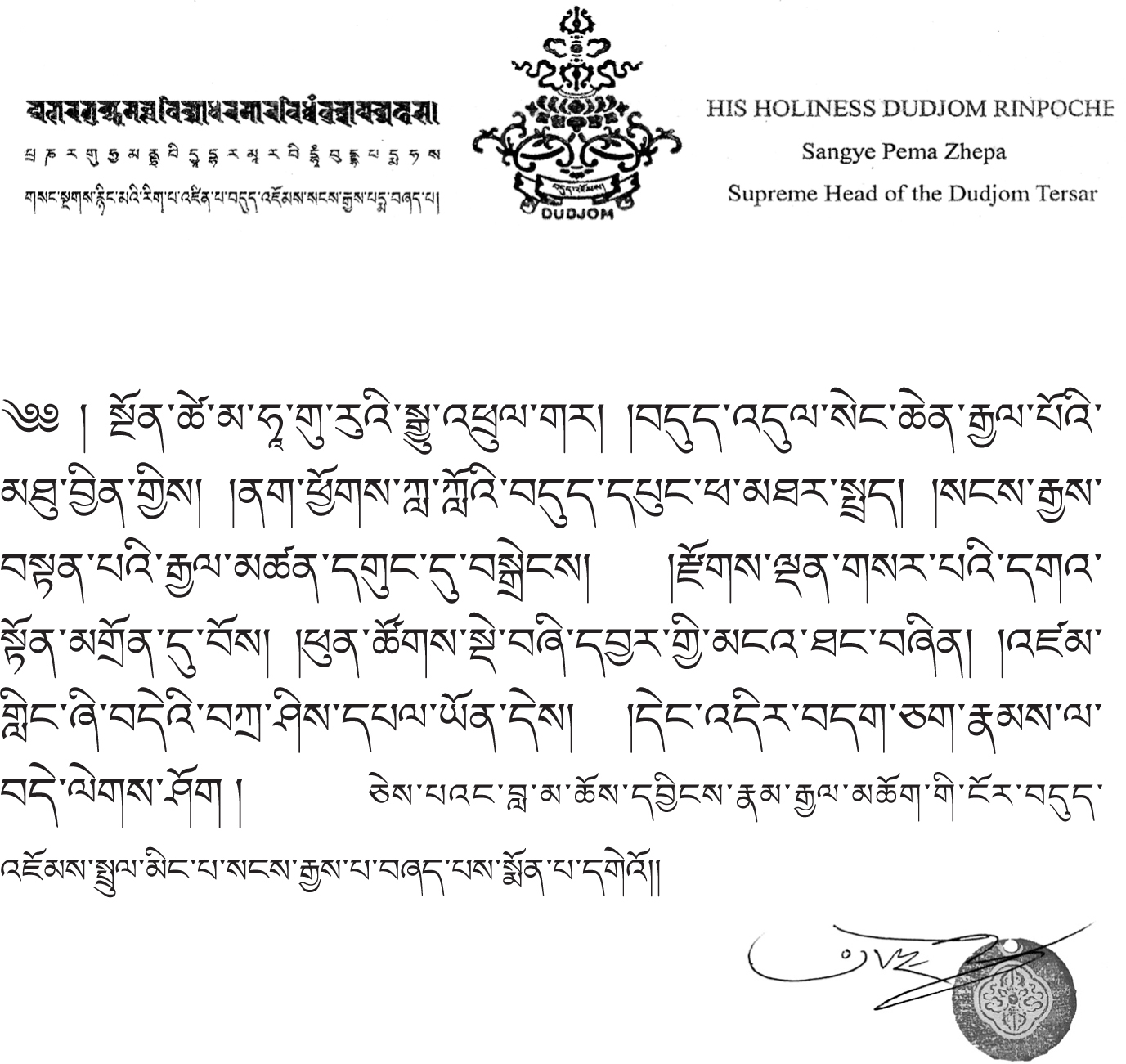Previously, as the magical manifestation of Great Master [Padmasambhava], You, Lion King Tamer of Mras [Gesar of Ling], through your blessings and power Expelled the dark forces of the barbaric mras to the farthest shore, Hoisted the victory banner of the Buddhas doctrine high in the firmament, And heralded in a celebratory time, a new golden age Of the four endowments, like summertime in full bloom.
May all those glorious qualities of auspicious peace and well-being in the world Bring us all great happiness now and always. Thus, at the request of Lama Chnam, I, the one named Dudjom Sangye Pema Shepa, offered this aspiration prayer. Translated by Light of Berotsana Translation Group.
TRANSLATORS INTRODUCTION
T HIS TEXT NOW BEFORE YOU is the first English translation of
The Taming of the Demons. This important saga delves into the full-bodied and bloodied nature of the story itself. The previously published first three volumes of the epic begin with Gesars timely birth in this realm and the beginning of the process of the theme of reincarnation.
This then leads to the story of his rambunctious early yearsthe famous horse race, eventual ascendancy to the throne of Ling, and marriage to his destined wife, the lovely kin Drukmo. The current text is the story that generally follows this telling of the birth and coronation of Gesar. However, it should be noted that there are various aspects of the Gesar epic that remain controversial and are ongoing areas of scholarly research. Besides the chronology of the story itself, the actual length of the epic is open to some question, as is the somewhat varying content across different versions. In addition to the version that originated somewhere in the Golok region (situated between Amdo and Kham in northeastern Tibet), there are several others, including Mongolian, Persian, Indian, Ladakhi, Bhutanese, and Chinese versions. The Mongolian is likely the first written version, produced in 1716.
The current text to which we will now turn has its own story to tell. In contrast to the stories in the first three volumes, this is much more a martial story of battles won and strategies applied. It is a story that may appear gruesome at times, but as in all Gesar stories, the vanquishing and destruction of enemies is done with the full heart of compassion and with a view toward the eventual liberation of those who are vanquished. This story of the taming of the demons is generally the one that chronologically follows Gesars ascent to the throne and is the first in which he acts as a general and leader for the land of Ling. Identifying the land of Ling represents our first geographic challenge. If we look toward Kham and Amdo and review their mountains and valleys and the rivers that source within their borders, what we see is complex.
Current Lingtsang most likely represents the final distillate of a far larger area of Ling, dismantled by the Mongols in the seventeenth century. The actual land of Ling in all probability spanned a far larger area, incorporating much of Kham and some of Amdo and likely centered around the area between them, now known as Golok. The other major geographic challenge is with the land of Hor, which is the Tibetan word for Mongol and generally represents any area over which Mongolian tribes held sovereignty as well as, in particular, a much smaller area east of Ling and just east of the Yalong River (Nyak Chu). In later centuries, the Mongols controlled vast swaths of land north and west of Ling and the land of Hor, which then referred to a considerably different geographical area. However, there remain other areas in the story that we could not place with precision on a current map despite our efforts, though they are no doubt specific historical locations.

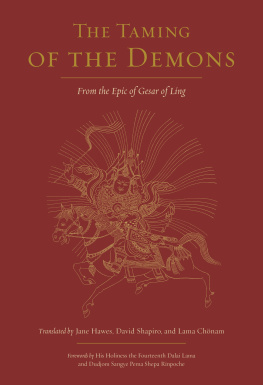


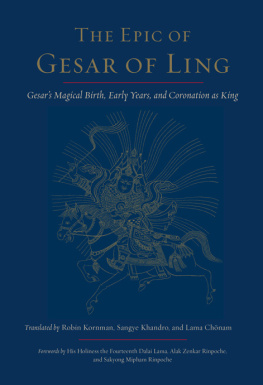



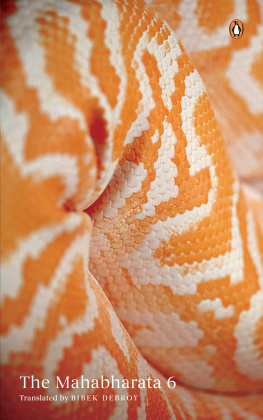
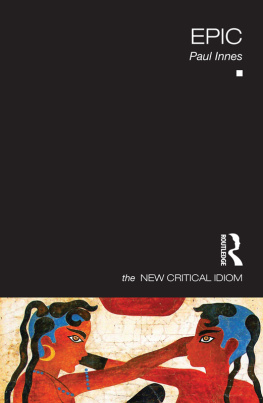

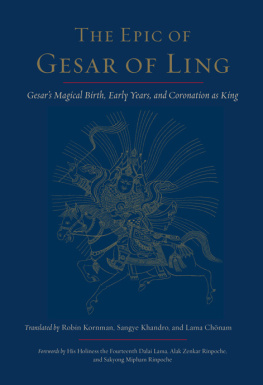
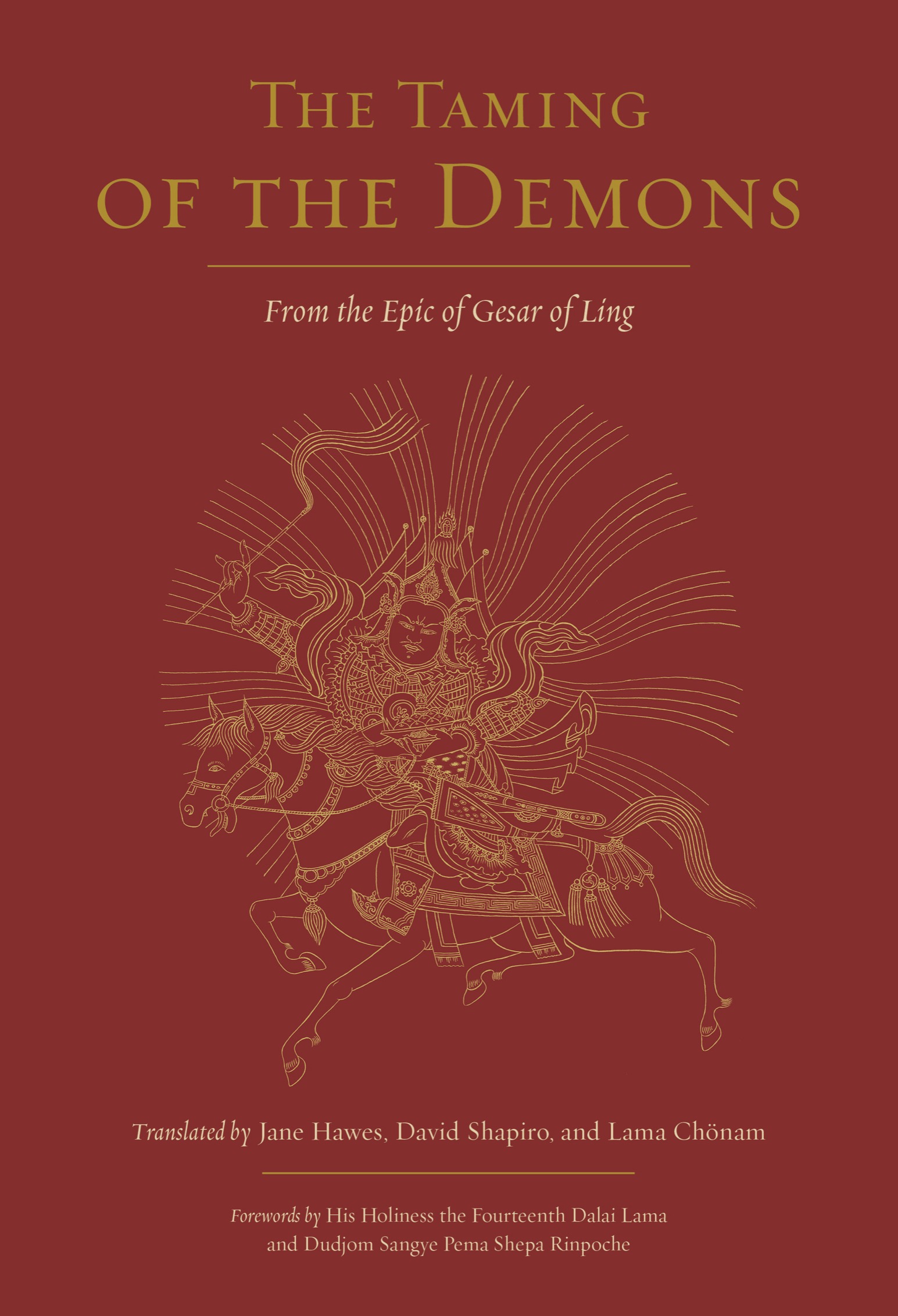
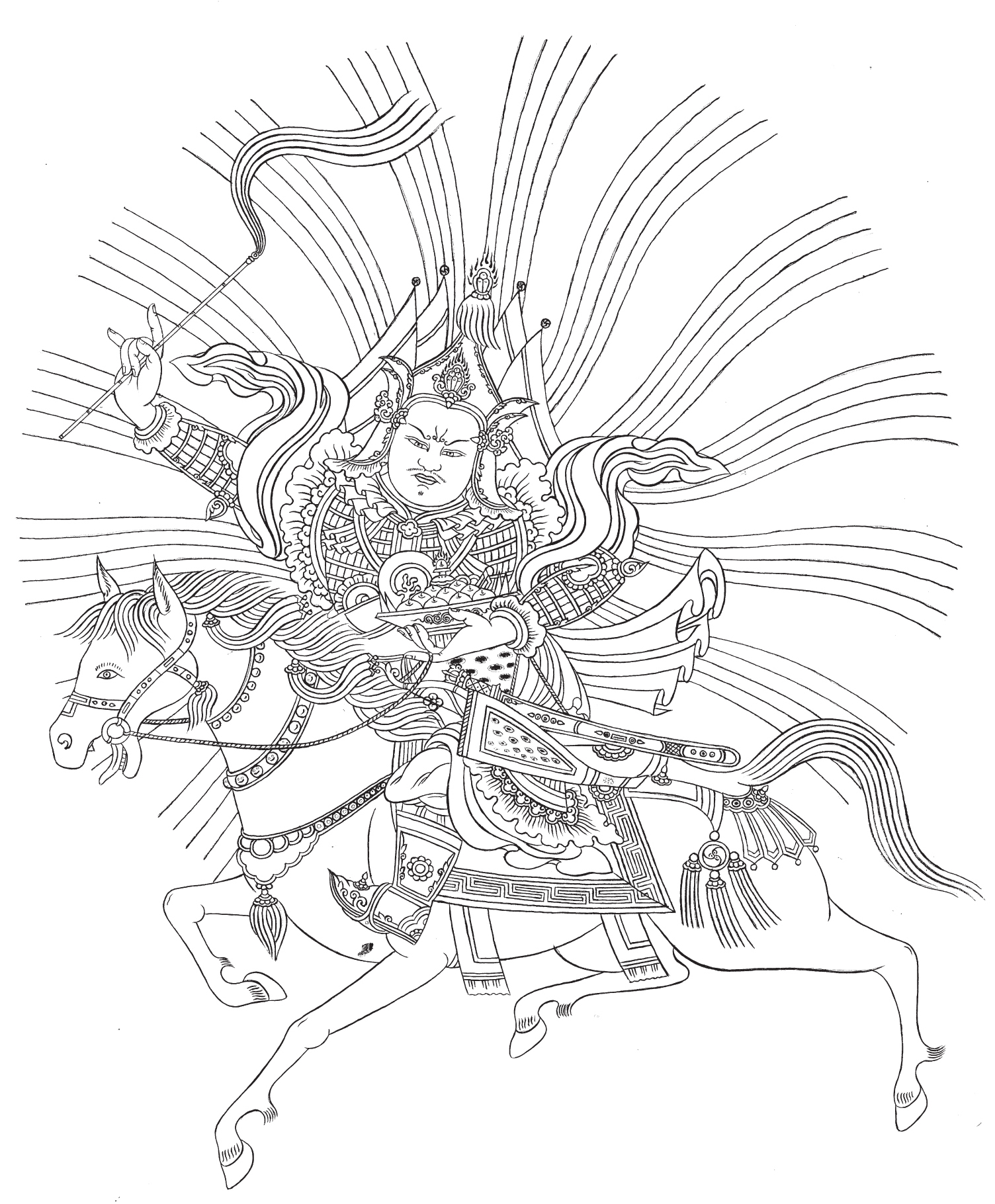

 VOLUME FOUR
VOLUME FOUR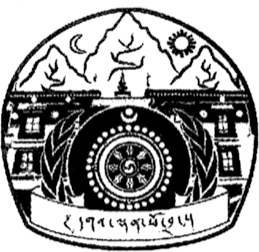 THE DALAI LAMA T HE EPIC G ESAR OF L ING IS A GREAT WORK drawn from centuries of oral tradition that combines cultural, literary, musical, and historical elements with Tibetan Buddhist values. The Gesar story is one of the Tibetan peoples most popular epics, its stories being enacted and sung at festivals and on important ceremonial occasions. Many ancient peoples have recited epics as a source of inspiration: the renowned Mahbhrata and Rmyaa in India, the Hamzanama in Persia, the Iliad and Odyssey in Greece, for example. Tales of the heroic feats of Gesar of Ling enjoy a similar status among the people of Tibet.
THE DALAI LAMA T HE EPIC G ESAR OF L ING IS A GREAT WORK drawn from centuries of oral tradition that combines cultural, literary, musical, and historical elements with Tibetan Buddhist values. The Gesar story is one of the Tibetan peoples most popular epics, its stories being enacted and sung at festivals and on important ceremonial occasions. Many ancient peoples have recited epics as a source of inspiration: the renowned Mahbhrata and Rmyaa in India, the Hamzanama in Persia, the Iliad and Odyssey in Greece, for example. Tales of the heroic feats of Gesar of Ling enjoy a similar status among the people of Tibet.  A UGUST 14, 2012
A UGUST 14, 2012 